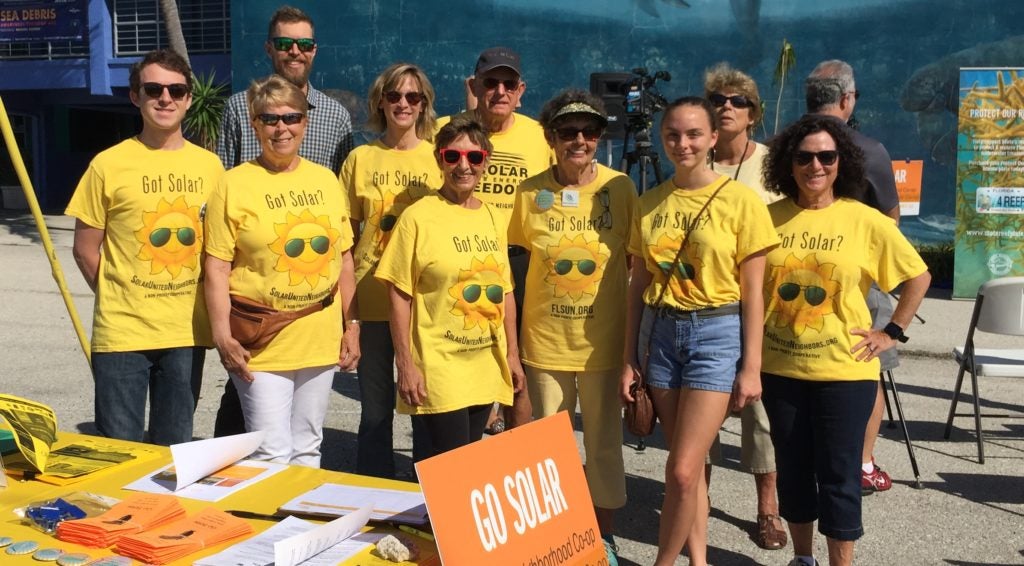New grant will power solar growth in Sarasota
By Ben Delman on June 22, 2020

Many Sarasota-area homeowners could be going solar soon. This is thanks to the Gulf Coast Community Foundation’s support of Solar United Neighbors. The foundation is providing a $30,000 grant to our organization. We are excited to have their support. We will use it to grow solar in Sarasota County. The grant will enable us to launch two new solar co-ops in Sarasota County. We will also expand youth education and community outreach programs in the area.
“The Gulf Coast Community Foundation has been instrumental in our solar co-ops’ success,” said Angela DeMonbreun, regional field director for Solar United Neighbors. “Their longtime support gives us cost and learning benefits that wouldn’t be available otherwise. There’s still a great demand for solar co-ops in the Sarasota area. This grant will help us meet it.”
The two new Sarasota County co-ops each will have room for as many as 200 members. The first will launch in the fall. We will enlist community partners and volunteers through July and August. They will help the co-op grow. Contact us if you would like to help. Word of mouth is a great way to spread solar!
The support complements Gulf Coast Community Foundation’s other projects in the region. These focus on sustainability and environmental conservation. Gulf Coast is a founding funder of The Partners for Green Places initiative. The initiative recently announced more than $160,000 in grants. The grants will help 10 local nonprofits make energy efficiency improvements. Gulf Coast is also completing work on a community “playbook”. It will contain recommendations for restoring and improving Sarasota County’s water quality.
“We love the way Solar United Neighbors has scaled its co-op model across our state,” said Mark Pritchett, president and CEO of Gulf Coast Community Foundation. “Climate change and environmental quality are two of the regional priorities we identified through our most recent research scan. SUN is empowering residents to address them at the individual and community levels.”
